| Heading west from Pagosa
Springs we passed another distinctive "Chimney Rock", one of many in the US.
We made a slight deviation to look at the archaeological site there. | 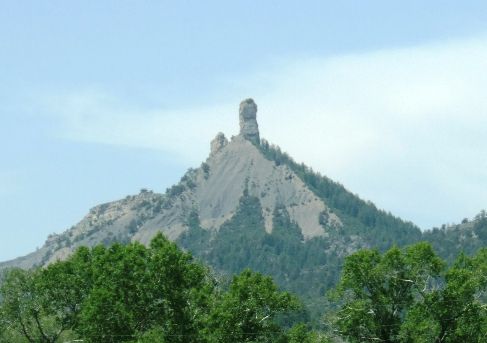 |
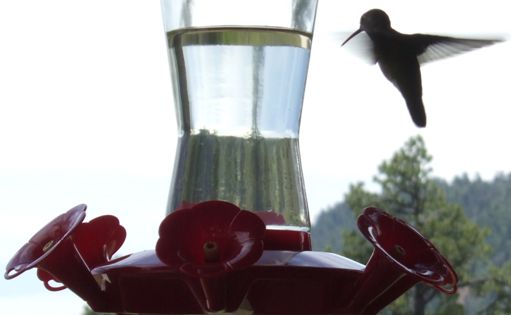 |
Alas, when we arrived we discovered that you can only visit the site by
driving in a guided party, and our RV is too large for the route. We watched
the humming birds at the feeders for a while, then travelled on. |
| A rare moment when the
wings aren't in high speed motion. This is larger than life size. The
feeders are red because the birds are supposed to be attracted to the bright
colours. But in fact the colour is not important so long as the sugar
concentration in the water is high enough. | 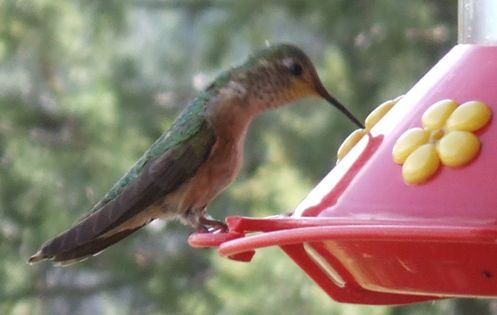 |
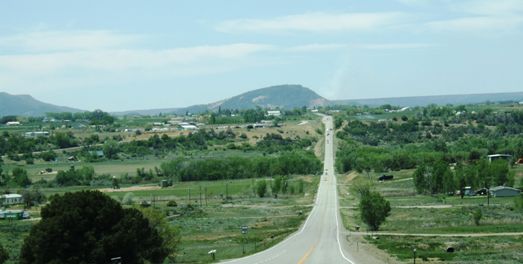 |
So back to the main road and onward. US160 is known as the 'million dollar
highway', presumably because that was its cost. But I don't know when that
was. It is a good two lane highway heading due west through miles of not a
lot, although it is more populated than the high plains are. |
| We stopped at the largest
town for miles which is Durango. The Durango and Silverton is a narrow gauge
railroad built to serve the gold and silver mines in Silverton. Today it is
a thriving tourist route passing right through our campground. | 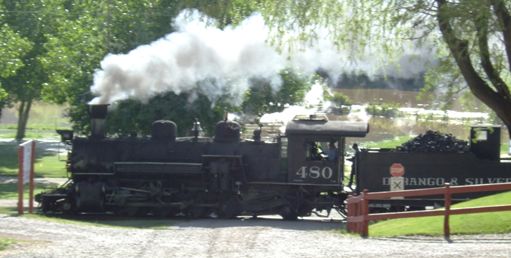 |
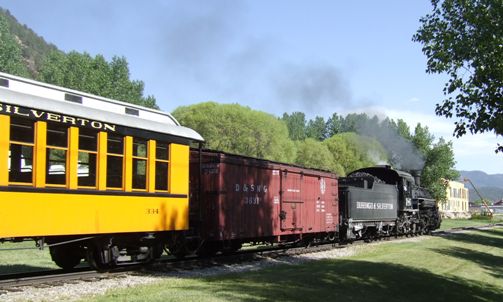 |
Four trains leave Durango in the morning up the 50 mile single track and
then return in the afternoon. The first train of the day was pretty empty,
but then it isn't quite the season yet. |
| The river also runs
through the line of trees at the far end of the campground. There was
standing water in this field when we arrived but by the following morning it
had risen even more. Flooding is a serious problem in many parts of the US,
particularly with snowmelt at this time of year, but also with bad weather
in the mid west states. | 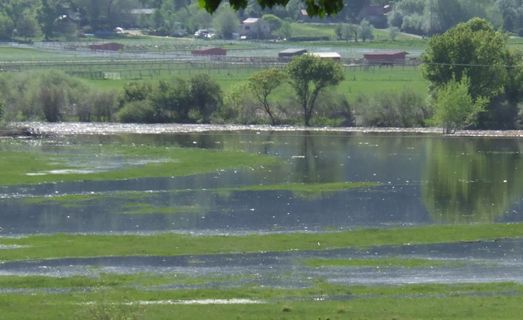 |
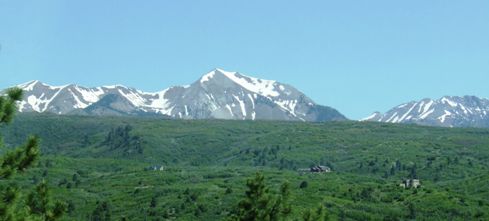 |
We travelled onward into emptier country with the snow covered mountains
almost always in view. Snow is present all the year round above 12,000 ft.
We are still over a mile high, as we have been since before reaching
Cheyenne. The difference here is that it is so green as the landscape is
covered with trees, mainly conifers. |
| This huge bluff, over
2000 ft higher than the surrounding plain, is the northern end of Mesa
Verde. You can just see the road into the national park rising from right to
left in a steady grade. What you can't see from this angle is how much the
road twists and turns. | 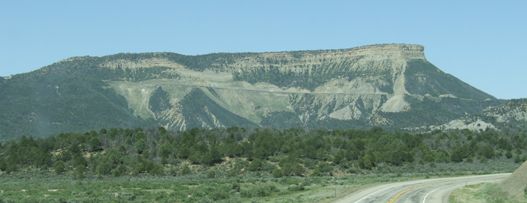 |
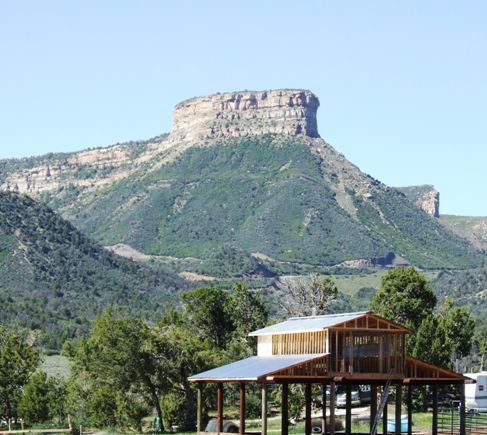 |
We camped just outside the park and this was the view from the campground.
Splendid in the sunshine, but when the clouds came it was almost invisible. |
| We only show a fraction
of the photos we actually take. We do photograph many of the flora of the
area like these brilliant yellow flowers. | 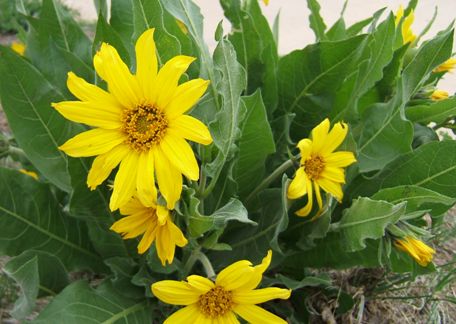 |
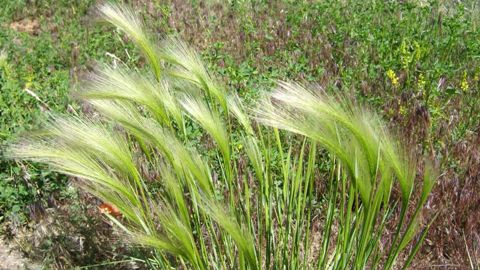 |
And Jan has a whole series on grasses of which this is one of the finer
examples. This one looks so beautifully soft and silky. There are dozens of
different grasses to be seen at these higher elevations. |
|